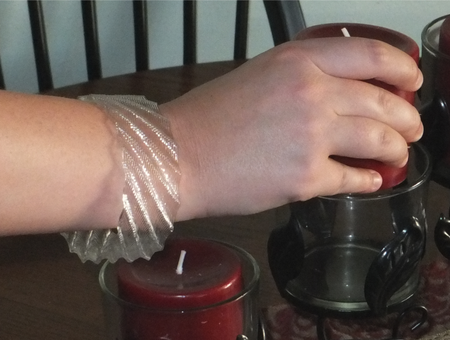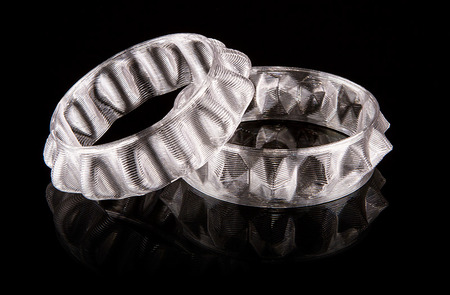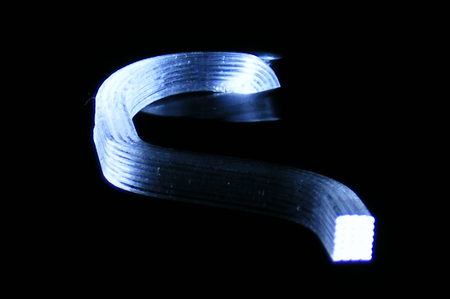As the market for personal 3D printers expands, so do your options for plastic filaments. Along with the standard ABS and PLA filaments that have been available for many years, we’ve seen a number of fascinating experiments with different filaments, including some involving wood and ceramics. Now Taulman offers another unique filament: t-glase. What makes it unique? It’s incredibly transparent.
t-glase is actually made from PETT, or polyethylene terephthalate polymer, which can be printed at the reasonable temperature of 212C: a bit more than that required by PLA and far less than ABS temperatures. In other words, your 3D printer is likely able to print t-glase.
 Taulman expects many designers to develop 3D printed jewelry with the new filament and we agree. Taulman recommends using the largest nozzle size possible to maximize the optical and reflectivity features, suggesting that fine-detailed jewelry may not be so feasible.
Taulman expects many designers to develop 3D printed jewelry with the new filament and we agree. Taulman recommends using the largest nozzle size possible to maximize the optical and reflectivity features, suggesting that fine-detailed jewelry may not be so feasible. While it appears you’ll have to do some experimentation with t-glase, it does provide more benefits: it hardly warps at all and is quite strong. And then there’s the light pipes.
You can print a “light pipe” with this material. Imagine a curved shape that channels light from a source to where ever you need it to go. That’s not easily doable with other materials you’ll find in your 3D printer.
There is one catch: the filament is expensive. For a one pound spool (454 grams), you’ll pay USD$30. In metric terms, this is around USD$66 per kg, quite a bit more than other plastic filaments.
But it’s transparent.
Via Taulman



